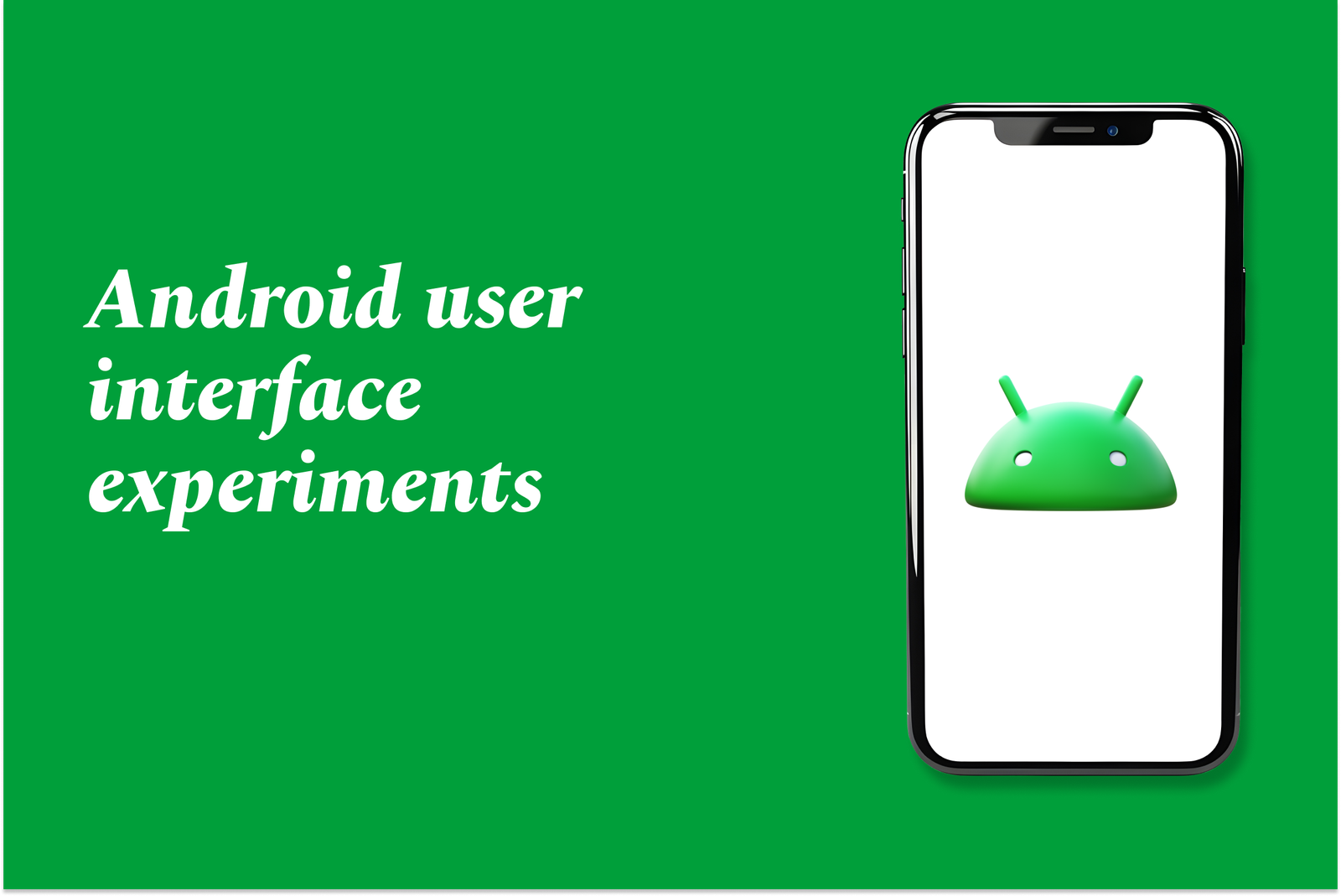Android User Interface Experiments
Android user interface experiments involve testing and exploring different design approaches, accessibility features, and development frameworks to enhance usability, performance, and user experience on Android devices. These experiments help innovate and improve interaction methods and app interfaces.
Android User Interface Experiments
1 ) Background and Motivation for Switching to Android
The author, previously an iPhone user for four years since the introduction of VoiceOver in iOS 3GS (2009 ), conducted an experiment to assess if Android 4.2.2 “Jelly Bean” was mature enough in terms of accessibility and usability to switch to full time use. Apple’s early bundling of VoiceOver was revolutionary for visually impaired users, while Android initially lagged with basic speech output and a command shell. Accessibility improved with Android 4.0 and saw a significant leap with 4.1 Jelly Bean, introducing the Explore By Touch gesture model similar to Apple’s. By Android 4.2.2, gesture recognition became stable enough to warrant a serious evaluation.
2 ) Initial Experiences with the Nexus 4
The author chose a Nexus 4 for its timely updates and stock Android interface, avoiding manufacturer overlays that hinder accessibility. The hardware was solid but had audio issues — muffled call quality and a less satisfactory speaker compared to the iPhone 4S. WiFi connection sometimes became unstable, requiring reconfiguration. Initial setup was problematic as TalkBack did not activate via the described gesture, necessitating assistance from a sighted partner. Later Jelly Bean updates improved TalkBack activation through a quick toggle, improving practical usability.
3 ) Accessibility and Account Setup
Setting up contacts and calendars was straightforward using OwnCloud CalDAV and CardDAV solutions instead of Google Contacts, aiming for better cross platform compatibility and control over data. Overall, the author found Android’s accessibility improving but still with some hurdles in setup and hardware quality.
4 ) Broader Perspective on Cross Platform UI Frameworks
Although the article primarily focuses on Android’s accessibility evolution, it also references broader UI experimentation by developers comparing native Android development to other mobile frameworks such as Flutter, React Native, Xamarin, and native iOS. These experiments involve developing identical apps in multiple frameworks to evaluate development experience, UI consistency, and performance metrics like CPU usage.
5 ) Phyphox Sensor App as an Example of Android UI Experimentation
The article mentions phyphox, an experimental app developed at RWTH Aachen University, which uses Android device sensors for educational physics experiments. It demonstrates the ability to create rich sensor based UI experiences leveraging multiple hardware sensors with flexible data export and remote control. Recent updates to the app have improved UI components and sensor capabilities, illustrating the potential of Android UI for complex experimental apps.
Summary:
This article explores Android UI experiments from two angles: the accessibility improvements enabling full time use for visually impaired users, and the comparative development of apps using different frameworks for UI and performance testing. It highlights Android’s evolving accessibility features, challenges faced during initial adoption, and innovative app examples like phyphox that showcase Android’s versatile interface capabilities.
https://justacademy.in/news-detail/top-animation-packages-for-flutter
https://justacademy.in/news-detail/android-vr-and-ar-support-news
https://justacademy.in/news-detail/top-android-smartphones-launched-in-2025
https://justacademy.in/news-detail/google-play-protect-latest-news
https://justacademy.in/news-detail/ai-powered-ui-generation-in-flutter
Related Posts
Java supports GDPR and data privacy by enabling secure data handling through encryption, controlled access, and precise data management. It allows developers to minimize PII exposure, ensure data confidentiality, and design workflows that comply with data protection regulations effectively.
Java code quality tools have evolved to include advanced static analysis, integrated security checks, and AI-powered code reviews. These updates help developers detect bugs, enforce coding standards, and enhance security, streamlining the development process and improving overall code reliability.
Java remains a cornerstone in big tech companies, evolving with modern features like records, pattern matching, and virtual threads. Its robust ecosystem, enhanced performance, and growing AI integrations keep it vital for both legacy systems and innovative new projects.
Java and CI/CD pipeline optimizations streamline Java application development by automating builds, tests, and deployments. They improve efficiency through parallelization, caching, and secure secrets management, enabling faster feedback loops and more reliable, scalable software delivery.
Java supports modern cryptography standards through its flexible Java Cryptography Architecture (JCA), enabling integration of advanced algorithms like AES, EdDSA, and post-quantum tools. Libraries like Bouncy Castle offer FIPS-certified, hardware-accelerated implementations for secure development.
Java 23 enhances record patterns by enabling concise, direct destructuring of record components within pattern matching, simplifying type checks and data extraction. This improvement boosts code readability and expressiveness by reducing boilerplate in handling immutable data classes.
Java remains a top choice for mobile app backends, powering scalable, secure, and high-performance server-side solutions. Latest trends include cloud-native microservices, reactive programming, and enhanced JVM optimizations, enabling efficient, flexible, and robust mobile backend development.
Java SE 24 and LTS Java SE 21 offer enhanced features and performance, while Apache Spark 4.0.0 introduces Scala 2.13 support and advanced ML and SQL capabilities. Together, they empower developers to build scalable, high-performance data applications with modern tools.
JUnit 5 modernizes Java testing with a modular architecture, improved assertions, and seamless Java 8+ support. Beyond JUnit, tools like Mockito and AssertJ enhance mocking and assertions, creating a powerful, flexible ecosystem for writing clean, efficient Java unit tests.
Java plays a pivotal role in cloud automation tools by providing a robust, platform-independent language used to build scalable automation frameworks like Jenkins and Selenium, enabling efficient CI/CD pipelines, testing, and orchestration across diverse cloud environments.










